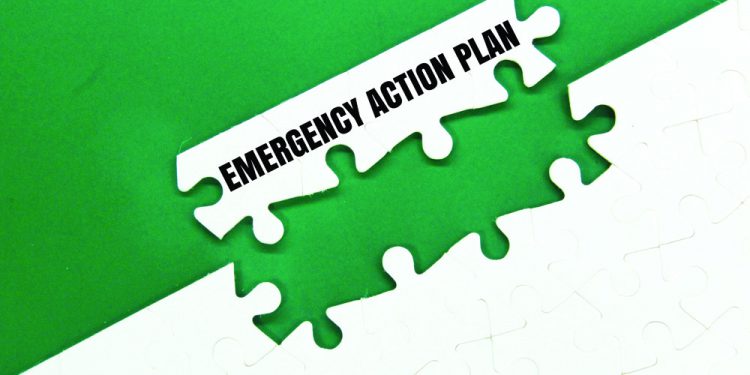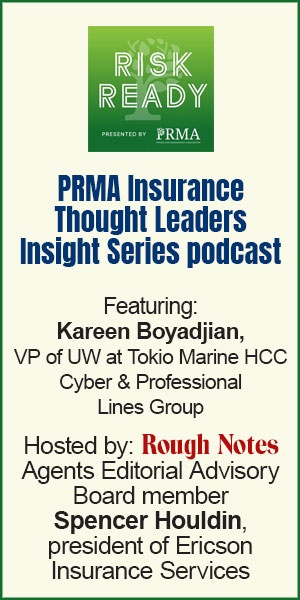Ways you can help get business
owners ready for wildfires and hurricanes
While I live by the motto, “Stay ready,” instead of “Get ready,” or
“Get prepared,” in reality not everyone is ready for
the possibility of what a wildfire or hurricane could do to their operations.
By Michael Wayne
I’m not a fan of advertisements or articles that contain phrases such as, “In times like these,” or “Now, more than ever.” They minimize the obstacles, trials, and tribulations that those who came before us faced. At the same time, they sound like a cheap scare tactic.
Between climate change, tariffs, supply chain issues, and other crises, businesses and organizations must feel like they are being bombarded with a litany of ever-increasing uncertainty. Unfortunately, there are indeed threats that have to be considered.
June marks the beginning of the Atlantic hurricane season as well as wildfire season for the Western United States. As we have already seen this year, however, wildfires can occur at any time, and with devastating effects. Between 13 and 18 named storms, three to five major hurricanes, and three to six Category 3 strength or higher hurricanes are predicted to make direct U.S. impact this year.
While I live by the motto, “Stay ready,” instead of “Get ready,” or “Get prepared,” in reality not everyone is ready for the possibility of what a wildfire or hurricane could do to their operations. Regardless of the catastrophe, here are five top preparedness tips for you to get business owners ready for wildfires and hurricanes.
Conduct a risk assessment
You should have already done this for any established clients, but conducting an annual risk assessment is sound practice. For prospects, or new clients, the initial assessment should be as exhaustive as possible. A solid risk assessment forms the foundation for all preparedness efforts. Use all of the resources at your disposal to really understand the exposures. You will want to:
- Map the risk. Use wildfire zone maps and FEMA flood tools to identify high-risk areas. Research whether the region has had near-misses or past incidents and take that seriously.
- Inventory assets. Document the property, equipment, and everything else with photos or videos to streamline potential insurance claims.
- Review insurance coverage. Confirm that the policies you recommend include adequate limits for fire, wind, flood, and business interruption.
- Identify supply chain vulnerabilities. What measures are in place to replace key vendors or reestablish your operation in a temporary or new facility if required?
Create and practice a customized emergency plan
Many people believe that they are calm and collected in the face of a crisis, that in an emergency nothing will be forgotten or overlooked. Most of them are wrong. Having an accessible, written plan that outlines procedures for evacuation, shelter-in-place, utility shutoffs, and emergency contacts is essential to preventing chaos.
- Plan escape routes. Identify multiple exits from your building. Clear overgrown brush and remove overhead branches that could block routes during a fire or storm.
- Assign roles. Designate who leads evacuations, calls emergency services, and checks that everyone is accounted for.
- Prepare emergency kits. Stock basic supplies—first aid, flashlights, chargers—and store vital documents (like insurance and vendor contacts) in a fireproof box and/or online.
- Run drills. Regular drills help staff respond calmly under pressure. Practice evacuations, emergency shutdowns, and sheltering protocols.
Establish reliable communication
Clear communication keeps everyone informed before, during, and after an event. Because systems can be knocked out, don’t rely on a single method. Redundancy needs to be the rule, not the exception. Cellphones need to be backed up with landlines or radios where possible.
- Employee contact tree. Maintain updated contact info and use a text or call tree to notify staff quickly.
- Emergency alerts. Sign up for local government notifications. Encourage staff to do the same.
- Two-way check-ins. Have a way for employees to confirm their safety.
- Customer and vendor updates. Prepare message templates and use email, social media, or your website to share updates.
Plan for business continuity
Preparation should be made in advance for how operations will continue if a facility is damaged or inaccessible. The goal is to minimize downtime and revenue loss while ensuring customer commitments can still be met.
- Identify mission-critical functions. Prioritize services or operations that must resume quickly.
- Enable remote work. Ensure key staff can work remotely with cloud-based tools and VPN access.
- Back up data. Protect essential records by backing up to the cloud or offsite servers regularly.
- Strengthen your supply chain. Know who your critical vendors are and find alternate sources ahead of time.
- Prep financially. Understand how business interruption insurance works. Keep financial contacts and claim info easily accessible.
Strengthen physical safeguards
Whether facing 100-mph winds or flying embers, small improvements can make a big difference. These physical measures may seem simple, but they can drastically reduce the severity of damage.
- Clear defensible space. In fire-prone zones, maintain at least 30 feet of clear space around buildings. Remove dry leaves, trim trees, and clean gutters.
- Install barriers. Use fire-resistant screens on vents. For hurricanes, pre-cut plywood for windows or install shutters.
- Secure outdoor items. Anchor signs, generators, and tanks. Tie down or bring inside anything that could become a projectile.
- Reinforce building elements. Inspect your roof, doors, and foundation. Seal openings to prevent water intrusion. In flood-prone areas, consider sandbags or flood barriers.
As insurance professionals, we are not in the business of predicting the next disaster. We are in the preparedness business and mitigating the damage. You are your client’s partner, and your job is to give your partner’s business, their passion, the best chance to survive and recover.
The author
Michael Wayne is a freelance writer who focuses on insurance and risk management topics for agents and brokers.






